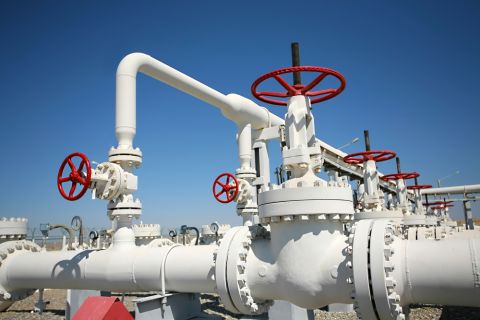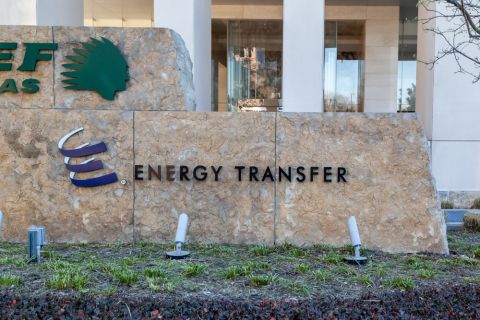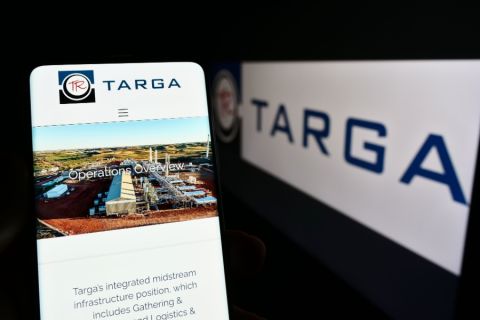
Sempra’s corporate headquarters in San Diego, California. (Source: Shutterstock.com)
San Diego-based Sempra is considering development of carbon capture and sequestration (CCS) around its Port Arthur liquefaction facility, which is currently under construction, according to Sempra Infrastructure Partners LP CEO Justin Bird.
Sempra’s 70%-owned subsidiary, Sempra Infrastructure, recently announced a $13 billion final investment decision (FID) for the development, construction and operation of the Port Arthur LNG Phase 1 project in Jefferson County, Texas.
“So we think there's opportunities to not just reduce carbon output of our own facilities but potentially expand that to some of those other industrial facilities in the region,” Bird said during the company’s first-quarter 2023 webcast on May 4.
Port Arthur’s Phase 1 is fully permitted and designed to include two natural gas liquefaction trains, two LNG storage tanks and associated facilities with a nameplate capacity of 13 million tonnes per annum (mtpa), according to Sempra.
The long-term contractable capacity of 10.5 mtpa is fully subscribed under binding long-term agreements with ConocoPhillips, RWE Supply and Trading, PKN ORLEN SA, INEOS and ENGIE SA.
The expected commercial operation date for Train 1 is 2027 and the date for Train 2 is 2028, according to Sempra. Phase 1 would reach its full run rate in 2029, Sempra chairman, president and CEO Jeffrey Martin said during the webcast.
Bird said teams led by Bechtel Energy Inc. have mobilized to start construction of Phase I of the project. There are already approximately 450 workers on site, including Bechtel and Sempra Infrastructure employees.
“As a result, the site is changing daily. Clearing of the areas for the two LNG trains and two storage tanks is almost complete. And we've already started soil stabilization. We're doing this all with a firm eye on maintaining both a strong safety culture and deep community support for the project,” Bird said.
Phase 1 is expected to generate an estimated 5,000 highly skilled jobs during construction and boost the economies in Port Arthur and Jefferson County, according to Sempra.
Moscow’s decision to invade Ukraine in early 2022 has led to an energy crunch in Europe and the U.K. due to a drastic reduction in gas flows from Russia, which was a major energy supplier. Robust gas production in the U.S. has allowed LNG producers to capitalize on the opportunity and boost shipments to the regions.
New U.S. liquefaction capacity in coming years will be destined primarily for Europe, the U.K. and Asia as demand for LNG is forecasted to continue to rise, according to the U.S. Energy Information Administration.
“We're bullish about future LNG opportunities and expect the U.S. LNG capacity will grow annually at a double-digit clip through the end of the decade,” Martin said.
Activities at Port Arthur LNG and other LNG projects are part of Sempra’s new five-year capital plan to spend $40 billion from 2023 to 2027.
Sempra preps for Phase 2
Sempra Infrastructure is already actively marketing and developing Port Arthur LNG Phase 2, which will have a similar offtake capacity as Phase 1, according to the company.
Sempra Infrastructure has retained rights over the associated development and common facilities and continues development work on the proposed expansion. Last month it received the environmental assessment from the Federal Energy Regulatory Commission that cited no adverse impacts, Bird said during the webcast.
Bird said there was strong interest in Phase 2, which “will create significant scale in the Gulf Coast.”
“So we're continuing to work on marketing… permitting and construction. And then once those three are wrapped up and we have commercial arrangements, we'll move forward to the financing phase,” Bird said.
Recommended Reading
Ozark Gas Transmission’s Pipeline Supply Access Project in Service
2024-04-18 - Black Bear Transmission’s subsidiary Ozark Gas Transmission placed its supply access project in service on April 8, providing increased gas supply reliability for Ozark shippers.
Scathing Court Ruling Hits Energy Transfer’s Louisiana Legal Disputes
2024-04-17 - A recent Energy Transfer filing with FERC may signal a change in strategy, an analyst says.
Balticconnector Gas Pipeline Will be in Commercial Use Again April 22, Gasgrid Says
2024-04-17 - The Balticconnector subsea gas link between Estonia and Finland was damaged in October along with three telecoms cables.
Targa Resources Ups Quarterly Dividend by 50% YoY
2024-04-12 - Targa Resource’s board of directors increased the first-quarter 2024 dividend by 50% compared to the same quarter a year ago.




